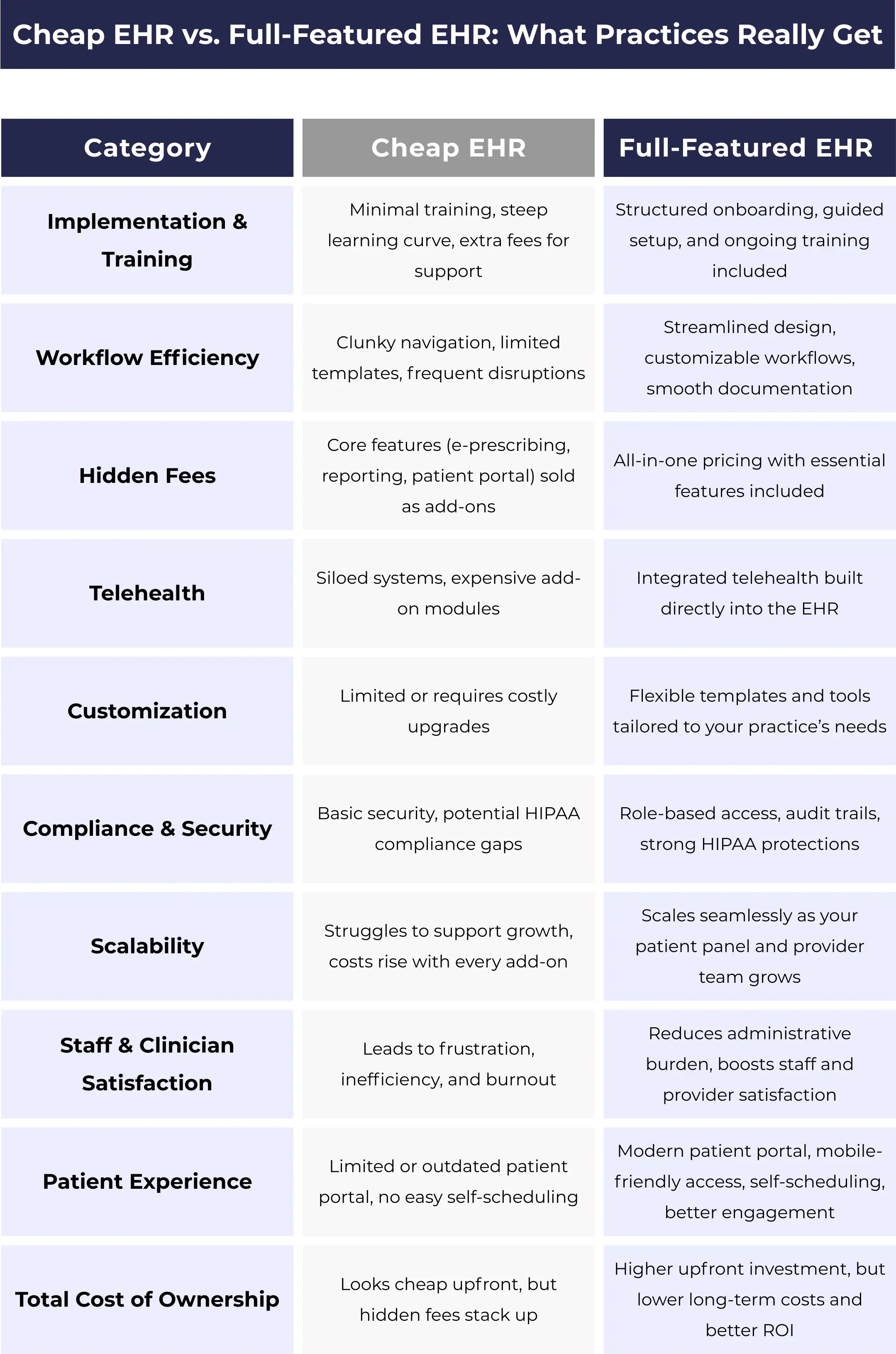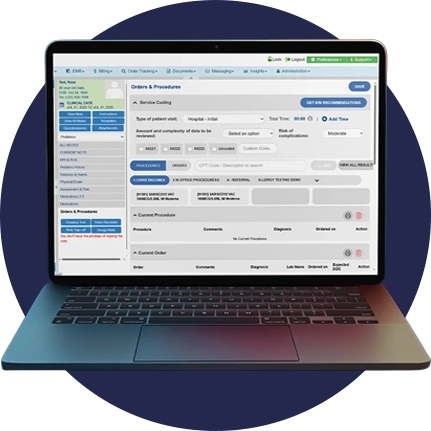Key Takeaways
- When evaluating an OBGYN EHR system, look beyond the sticker price.
- The real cost of a cheap EHR shows up in inefficiency, staff burnout, compliance risks, and patient dissatisfaction.
- A robust, scalable EHR might require a higher initial investment, but it pays off by streamlining workflows, improving patient care, and avoiding a cycle of add-ons and hidden fees.
- Discover 5 secrets to an easy OBGYN EHR transition.
At first glance, a cheap EHR might seem like the perfect solution for a growing practice. After all, why spend more when you can start with something “affordable”? But many OBGYN practices soon discover that what looks budget-friendly on paper often leads to frustration, hidden fees, and expensive workflow disruptions.
If you’re weighing options like an affordable EHR for OBGYN practices or even asking, “is there a free EHR?”, it’s important to understand the full picture of what you’re actually paying for.
Table of Contents
The Real Price of Implementation
- Limited training that leaves staff guessing how to use the system efficiently
- Extra hours spent troubleshooting instead of caring for patients
- Additional charges for “premium” training sessions or extended support
The result? Extended adoption timelines and frustrated staff who struggle to fully embrace the system. According to KLAS Research, with poor training, only 36% of end-users said they were satisfied with the EHR. Without buy-in, successful implementation becomes nearly impossible, and what once seemed affordable quickly turns into a drain on both efficiency and morale.
For OBGYN practices, this can be especially damaging whether it’s delays in documenting prenatal visits, managing ultrasound reports, or coordinating delivery notes. Experienced EHR and AI technology vendors like OBGYN-Cloud address these challenges with free implementation and comprehensive, full-staff training.
Workflow Disruption: The Cost You Don’t See on the Invoice
A clunky or limited EHR starts as something that slows down your day. Over time, it slowly reshapes your entire practice, often for the worse.
- Documentation bottlenecks: Cheap systems may not offer OBGYN-specific templates or tools, forcing providers into time-consuming manual work for prenatal tracking, GYN histories, or postpartum follow-ups.
- Inefficient billing workflows: Gaps in revenue cycle management lead to delays and denials, especially for bundled maternity care or procedure coding.
- Staff burnout: Extra clicks, repetitive data entry, and broken workflows eat up clinical time and increase turnover.
Every minute wasted navigating poor design is a minute not spent with patients. Those lost minutes translate directly into lost revenue and declining quality of care.
The Nickel-and-Dime Trap: Add-Ons and Hidden Fees
- Advanced reporting or analytics for population health and prenatal outcomes
- Customization of templates and forms for OB visits and GYN procedures
- Secure messaging or patient portal access for pregnancy follow-ups
- E-prescribing, especially for controlled substances
What looked like an affordable EHR for OBGYN practices can quickly balloon into a system that costs more than premium solutions without delivering the same value. OBGYN-Cloud’s full-featured EHR system solves these pain points by delivering reporting, e-prescribing, and customization capabilities along with patient portal access and more, right from the start.
Telehealth and Siloed Charges
Today, telehealth is non-negotiable for patient access. But with an inexpensive OBGYN EHR, you may find telehealth tools are sold as costly add-ons, or worse, not available at all.
This could force your OBGYN practice into fragmented workflows, juggling separate systems for scheduling, documentation, billing, and telehealth. Not only does this add unnecessary subscription costs, but it also increases compliance risks and reduces efficiency, especially when managing prenatal check-ins or postpartum follow-ups virtually.

How Much Does an OBGYN EHR Cost, Really?
- Direct costs: Licensing, setup, support, and training
- Indirect costs: Staff productivity losses, patient no-shows, billing errors, and turnover from burnout
- Growth costs: Paying extra for every new provider, feature, or integration you need as your practice expands
What a Full-Feature EHR Provides From Day One
- Free implementation support – Ensures workflows, templates, and settings are configured correctly from day one for OBGYN-specific needs such as prenatal visits and postpartum tracking.
- Comprehensive training – With proper training, a whopping 83% of end-users report satisfaction compared to only 36% without it. Hands-on sessions ensure your team is comfortable with OB/GYN workflows.
- Data migration included – Patient records, demographics, and historical notes (including OB history) are moved over smoothly without extra costs or disruption.
- Practice-specific customization – Templates, order sets, and documentation tools are tailored to OBGYN workflows, reducing clicks and boosting efficiency.
- Ongoing support at no extra charge – Access to responsive customer support and continuous training keeps your staff up to speed as your practice grows.
The difference is clear: instead of being nickel-and-dimed for the basics, you get a partner committed to your long-term success.
Choosing Wisely: Invest in Long-Term Value
Instead of asking “is there a free EHR?”, ask:
- Will this system scale as my OBGYN practice grows?
- Does it come with specialty-specific tools for obstetrics and gynecology?
- Are telehealth, patient engagement, and reporting built in or sold separately?
- How much support and training are included?










